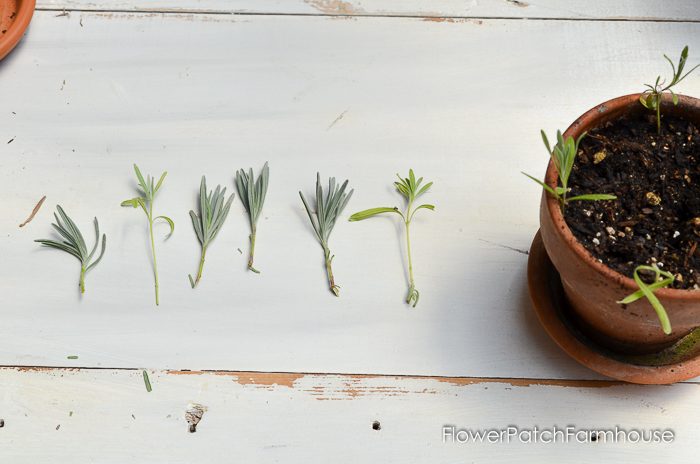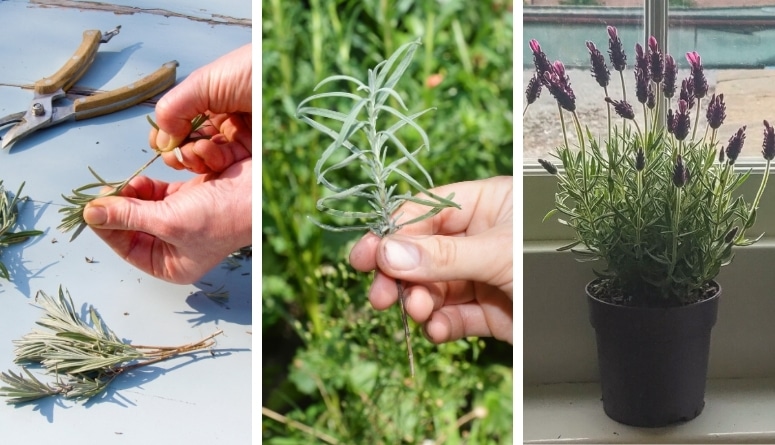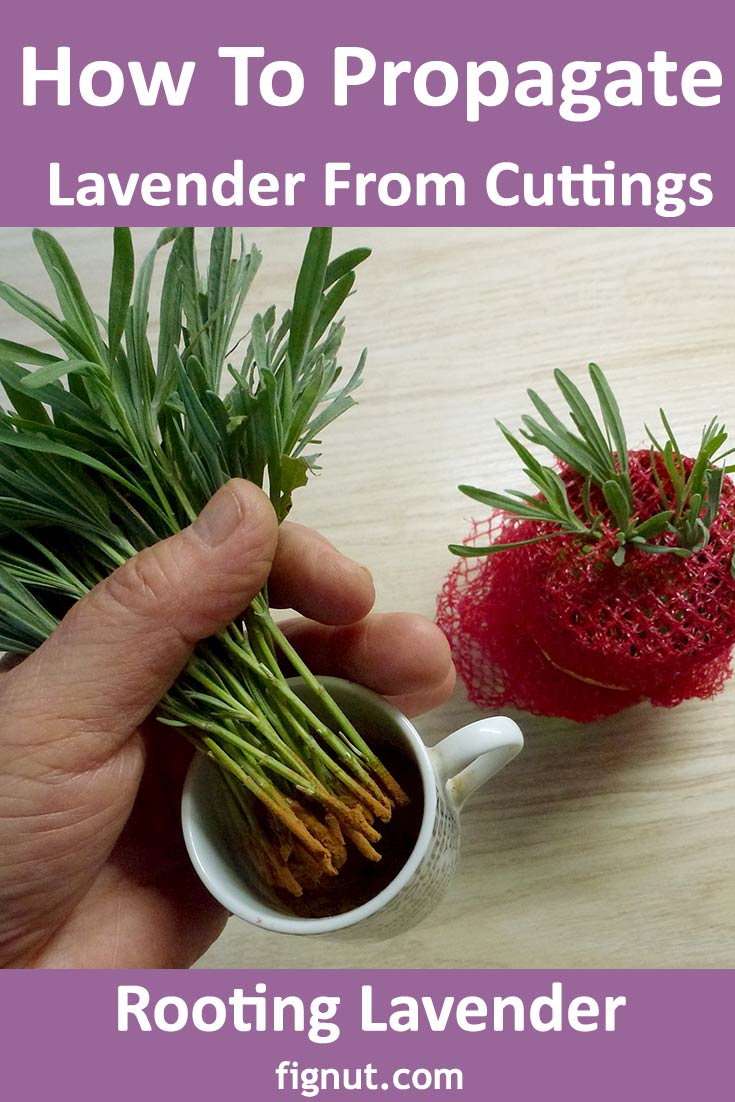Unlocking the Secrets of Lavender Cuttings
Lavender is a popular herb known for its calming scent, attractive purple flowers, and low-maintenance requirements. One of the most effective ways to propagate lavender is by using cuttings, which can be taken from mature plants. This method offers several benefits, including increased plant yield and reduced costs. But can you grow lavender from a cutting? The answer is yes, and with the right techniques, you can successfully propagate lavender plants from cuttings.
Propagating lavender from cuttings is a simple and cost-effective way to share plants with friends and family or to create new plants for your garden. This method also allows you to reproduce your favorite lavender varieties, ensuring that you can enjoy their fragrance and beauty for years to come. By taking cuttings from mature plants, you can create new plants that are genetically identical to the parent plant, which is ideal for preserving the unique characteristics of your favorite lavender varieties.
In addition to its many benefits, propagating lavender from cuttings is also a great way to learn about plant biology and the process of plant reproduction. By understanding how to take and care for cuttings, you can gain a deeper appreciation for the life cycle of plants and the importance of proper care and maintenance. Whether you’re a seasoned gardener or just starting out, propagating lavender from cuttings is a fun and rewarding experience that can add a new dimension to your gardening hobby.
Choosing the Right Lavender Variety for Cuttings
When it comes to growing lavender from cuttings, selecting the right variety is crucial for success. There are several types of lavender plants that can be grown from cuttings, each with its unique characteristics and suitability for cutting propagation. English lavender (Lavandula angustifolia) is a popular choice for cuttings, known for its compact growth habit and fragrant flowers. French lavender (Lavandula stoechas) is another popular variety, recognized by its distinctive “ears” of purple flowers. Spanish lavender (Lavandula stoechas subsp. pedunculata) is also a good option, with its vibrant purple flowers and silvery-gray foliage.
When choosing a lavender variety for cuttings, consider the climate and soil conditions in your area. English lavender is a good choice for cooler climates, while French and Spanish lavender prefer warmer temperatures. Additionally, consider the desired growth habit and flower color. Some lavender varieties, such as ‘Hidcote’ and ‘Munstead’, are compact and produce pale purple flowers, while others, such as ‘Grosso’ and ‘Provence’, are more vigorous and produce deeper purple flowers.
Regardless of the variety, make sure to choose healthy, disease-free plants with plenty of new growth. This will increase the chances of successful propagation and ensure that your new plants will thrive. By selecting the right lavender variety for cuttings, you can enjoy the beauty and fragrance of these lovely plants in your garden.
How to Take Lavender Cuttings for Successful Propagation
Taking lavender cuttings is a straightforward process that requires some basic tools and a little bit of knowledge. The best time to take cuttings is in the spring or summer, when the plant is actively growing. This is because the stems are softer and more prone to rooting during this time. To take cuttings, you will need a pair of sharp, clean pruning shears or a sharp knife, a pot or tray filled with a well-draining rooting medium, and a clear plastic bag or cloche.
Start by selecting healthy, vigorous stems with plenty of new growth. Cut the stems from the plant using a 45-degree angle cut, just above a node (where a leaf meets the stem). Remove any lower leaves that will be below the soil surface, leaving only a few sets of leaves at the top of the cutting. This will help prevent the cutting from drying out and reduce the risk of root rot.
Next, prepare the rooting medium by moistening it with water. Then, dip the cut end of the stem into a rooting hormone powder or liquid, following the manufacturer’s instructions. This will help stimulate root growth and increase the chances of successful propagation. Finally, plant the cutting in the rooting medium, firming the soil gently around the stem to secure it in place.
Water the cutting thoroughly, and then cover the pot or tray with a clear plastic bag or cloche. This will help maintain humidity and promote root growth. Place the pot or tray in a bright, warm location, but out of direct sunlight. Keep the soil consistently moist but not waterlogged, and wait for roots to develop. This can take anywhere from a few weeks to a few months, depending on the variety and growing conditions.
Preparing the Soil and Planting Lavender Cuttings
Once you have taken your lavender cuttings, it’s time to prepare the soil for planting. Lavender prefers well-draining soil that is rich in organic matter. To create a suitable soil mix, combine a general-purpose potting soil with a handful of perlite or sand. This will help to improve drainage and prevent waterlogged soil.
The ideal pH level for lavender is between 6.0 and 7.0. If your soil is too acidic or too alkaline, you can adjust the pH level by adding lime or sulfur. It’s also a good idea to test the pH level of your soil before planting to ensure that it is within the optimal range.
When planting your lavender cuttings, make sure to space them about 12-18 inches apart. This will give the roots room to grow and prevent the plants from becoming too crowded. Water the soil gently but thoroughly after planting, and then keep the soil consistently moist but not waterlogged.
It’s also important to provide your lavender cuttings with enough light. Lavender prefers full sun to partial shade, so choose a location that receives at least 4-6 hours of direct sunlight per day. If you are planting in a container, make sure to use a pot that is at least 6-8 inches deep to provide enough room for the roots to grow.
By following these tips, you can create a suitable environment for your lavender cuttings to thrive. With proper care and attention, your cuttings should develop roots and start to grow within a few weeks. Remember to keep the soil consistently moist but not waterlogged, and provide enough light for the plants to grow.
Caring for Lavender Cuttings: Tips for Success
Caring for lavender cuttings requires attention to watering, fertilizing, and pruning. Watering is crucial, as lavender cuttings need consistent moisture to develop roots. However, overwatering can lead to root rot, so it’s essential to strike a balance. Water the cuttings when the top inch of soil feels dry to the touch, and avoid getting water on the leaves to prevent fungal diseases.
Fertilizing is also important, as it provides the necessary nutrients for growth. Use a balanced, water-soluble fertilizer at half the recommended strength to avoid burning the roots. Pruning is another critical aspect of caring for lavender cuttings. Prune the cuttings regularly to encourage bushy growth and prevent them from becoming leggy.
Common mistakes to avoid when caring for lavender cuttings include overwatering, underwatering, and neglecting to prune. Overwatering can lead to root rot, while underwatering can cause the cuttings to dry out and die. Neglecting to prune can result in leggy growth and reduced flowering.
Troubleshooting tips for common issues include checking the soil moisture regularly, adjusting the watering schedule as needed, and pruning the cuttings regularly to maintain shape and promote healthy growth. By following these tips, you can ensure the success of your lavender cuttings and enjoy the beauty and fragrance of these lovely plants.
In addition to these tips, it’s also important to monitor the cuttings for pests and diseases. Check the cuttings regularly for signs of pests, such as aphids, whiteflies, and spider mites, and treat them promptly if necessary. Also, inspect the cuttings for signs of diseases, such as root rot, leaf spot, and powdery mildew, and take action to prevent their spread.
Common Challenges When Growing Lavender from Cuttings
While growing lavender from cuttings can be a rewarding experience, there are some common challenges that may arise. One of the most common issues is root rot, which can occur when the soil is too wet or when the cuttings are not properly drained. To prevent root rot, make sure to use a well-draining potting mix and avoid overwatering.
Pests and diseases are another common challenge when growing lavender from cuttings. Aphids, whiteflies, and spider mites are common pests that can infest lavender plants, while root rot, leaf spot, and powdery mildew are common diseases. To prevent pests and diseases, use organic pest control methods and maintain good hygiene practices, such as disinfecting your tools and equipment.
Another challenge that may arise when growing lavender from cuttings is poor rooting. This can occur when the cuttings are not properly prepared or when the soil is not suitable for rooting. To improve rooting, make sure to use a rooting hormone and provide the cuttings with adequate light and water.
Finally, some growers may experience difficulty with lavender cuttings that are not producing new growth. This can be due to a variety of factors, including inadequate light, water, or nutrients. To promote new growth, make sure to provide the cuttings with adequate light, water, and nutrients, and prune them regularly to encourage bushy growth.
By being aware of these common challenges and taking steps to prevent them, you can increase your chances of success when growing lavender from cuttings. With proper care and attention, your lavender cuttings can thrive and provide you with a bountiful harvest of fragrant flowers and foliage.
Using Lavender Cuttings to Create a Beautiful Garden Display
Lavender cuttings can be used to create a variety of beautiful garden displays, from formal hedges to informal borders. One popular way to use lavender cuttings is to create a lavender hedge, which can be used to define a garden bed or provide a screen for a patio or walkway. To create a lavender hedge, plant the cuttings 12-18 inches apart and trim them regularly to maintain a uniform shape.
Another way to use lavender cuttings is to create a lavender border, which can add a pop of color and fragrance to a garden bed. To create a lavender border, plant the cuttings 6-12 inches apart and trim them regularly to maintain a uniform shape. You can also use lavender cuttings to create a container garden, which can be placed on a patio or balcony.
In addition to these ideas, you can also use lavender cuttings to create a variety of other garden displays, such as a lavender topiary or a lavender wreath. To create a lavender topiary, plant the cuttings in a container and trim them regularly to maintain a uniform shape. To create a lavender wreath, plant the cuttings in a circular pattern and trim them regularly to maintain a uniform shape.
Regardless of how you choose to use your lavender cuttings, they are sure to add beauty and fragrance to your garden. With their delicate purple flowers and silvery-gray foliage, lavender cuttings are a great way to add a touch of elegance to any garden display.
Incorporating lavender cuttings into your garden design can also have a number of benefits, including attracting pollinators and improving air quality. Lavender is a popular choice for gardeners who want to attract bees and butterflies to their garden, as it is a rich source of nectar and pollen. Additionally, lavender has been shown to have a number of air-purifying properties, making it a great choice for gardeners who want to improve the air quality in their garden.
Conclusion: The Joy of Growing Lavender from Cuttings
Growing lavender from cuttings is a rewarding and cost-effective way to propagate this popular herb. With the right techniques and care, you can successfully grow lavender from cuttings and enjoy the beauty and fragrance of these lovely plants. Whether you’re a seasoned gardener or just starting out, growing lavender from cuttings is a great way to add a touch of elegance to your garden.
By following the tips and guidelines outlined in this article, you can increase your chances of success when growing lavender from cuttings. Remember to choose the right variety of lavender, take healthy cuttings, and provide the right conditions for growth. With a little patience and care, you can enjoy the many benefits of growing lavender from cuttings.
So why not give it a try? With the ability to grow lavender from cuttings, you can enjoy the beauty and fragrance of this popular herb all year round. Whether you’re looking to add a touch of elegance to your garden or simply want to enjoy the many benefits of lavender, growing lavender from cuttings is a great way to do so.
In conclusion, growing lavender from cuttings is a fun and rewarding experience that can add a touch of elegance to your garden. With the right techniques and care, you can successfully grow lavender from cuttings and enjoy the many benefits of this popular herb. So why not give it a try and see the joy of growing lavender from cuttings for yourself?





:max_bytes(150000):strip_icc()/SPR-how-to-propagate-lavender-2334-step-06-dc7ad2fb7ad74068af6def81f607430e.jpg)


